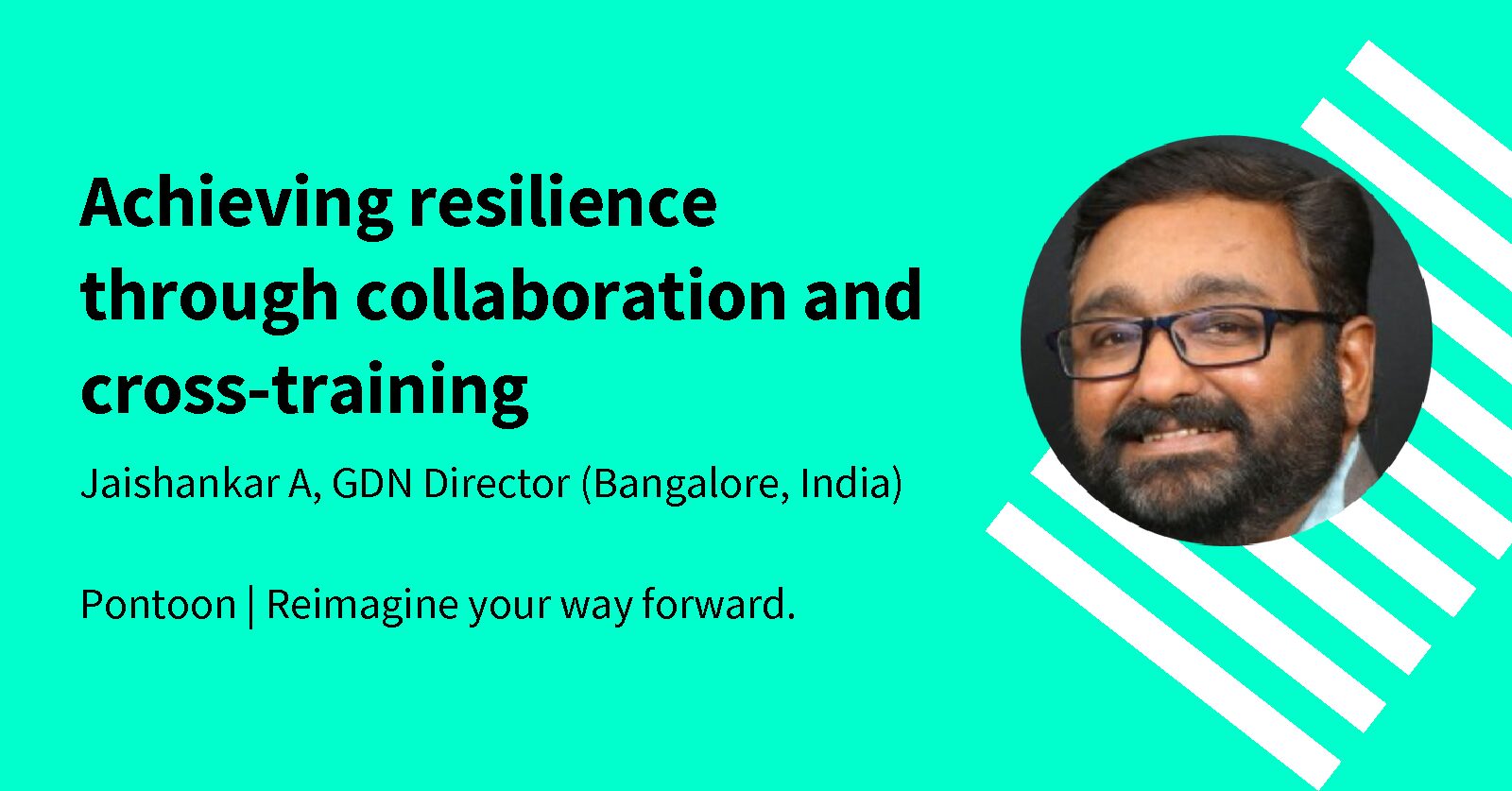Debunking 5 myths about global delivery models in talent acquisition
Challenging the misconceptions about delivery models is necessary for understanding the intricacies of talent acquisition within a global landscape. Only by understanding these nuances, organisations can unlock the power of talent delivery and enhance their workforce management strategies.

Katherine Nebriaga, GDN Director (Manila, Philippines)
Pontoon’s Global Delivery Network (GDN), featuring interconnected hubs in Manila, Bangalore, and Kraków, has been designed to assist our clients in achieving this goal. Our GDN teams are fully equipped to provide unwavering support for hiring programmes across any location in the world, at any time.
With that said, let’s debunk the five most common myths about global delivery models in talent acquisition.
Myth #1: Quality is compromised in global delivery models
Some believe that delivering sourcing and recruitment services from different locations may compromise the quality of candidates. However, with the right processes, screening methods, and communication channels, a global delivery model can maintain a high quality of talent acquisition.
At Pontoon’s Global Delivery Network, we know that communication is essential to ensure candidate quality and the success of our client’s talent programmes. That’s why we establish communication channels on all levels and between all involved parties – our own teams, suppliers, technology partners, the client, and their stakeholders.
With that in mind, it’s also worth reminding readers from outside of APAC that both Philippines and India have been operating in the global talent economy as outsourcing destinations for over thirty years now. Not only have they been serving mostly foreign businesses, but they are the true experts on all local matters. Our APAC-based colleagues have a wealth of experience and talent, and are capable of speaking common Asian and European languages – including Chinese, Japanese, Korean, Spanish, German, French, Portuguese, Italian and, of course, English, Hindi, and Filipino. By relying on these resources Pontoon is capable of designing more accurate solutions, choosing the delivery strategy that is the best for our clients.
Myth #2: Language and cultural barriers hinder collaboration
Language and cultural differences are sometimes perceived as barriers to synchronised collaboration in global delivery models. While it’s a fact that differences exist, they should not be discouraging. Quite the contrary, diversity of perspectives is a key component of innovation in business.
When combined across all locations, Pontoon’s GDN robust language capabilities enable us to serve our customer base pretty much anywhere in the world – and even in the unlikely scenario of language limitations, we can easily leverage the global presence of our parent company, the Adecco Group, and our ecosystem of sister brands.
As to mitigating the risk of miscommunication based on cultural differences, Pontoon offers cultural sensitivity training to all our colleagues. We enable a diverse and inclusive work environment through a culture of continuous learning and empower our colleagues to collaborate effectively, both within GDN and between GDN and programme teams, no matter where we are located. Nurturing diversity within our own organisation allows us to reimagine the hiring processes to enable a diverse workforce for our clients.
Myth #3: Global delivery models are purely cost-saving measures
While cost optimisation is an undeniable benefit of global delivery models, it’s not their sole purpose. Pontoon’s GDN provides access to a broader talent pool, faster turnaround times, and scalability to meet fluctuating demands. Effective talent acquisition involves finding the right balance between cost optimisation and high-quality results.
For instance, an unquestionable benefit that involves cost savings but simultaneously has a strong strategic impact on our clients’ businesses is direct sourcing and targeted sourcing. The direct sourcing expertise of Pontoon’s GDN enables clients to proactively engage specific candidates or groups who have the skills, experience, or qualifications necessary for the overall success of their business. Through this, our customers enhance their EVP, reputation, and ESG commitments.
Myth #4: Global delivery models lack flexibility
Some believe that global delivery models lack the flexibility needed to adapt to changing business needs. However, a well-designed global delivery model can be highly agile.
By leveraging a global talent pool, organisations can quickly scale their workforce up or down depending on their needs and requirements – and Pontoon’s Global Delivery Network helps them to do precisely that.
An example of an innovative approach to flexibility within our own ranks is the Flex Team. Aimed at enhancing scalability and agility, this dynamic team of Pontoon colleagues seamlessly transitions between programme teams, providing valuable support to recruitment efforts whenever required. Leveraging their sourcing and recruiting expertise, the Flex Team not only contributes to a seamless candidate experience but also continuously hones their skills to adapt to evolving needs.
Myth #5: Global delivery models are only relevant for offshore locations
While offshore locations are commonly associated with global delivery models, these models can also include onshore and nearshore components.
With Pontoon’s global reach, our clients can leverage a hybrid combination of local, regional, and global resources to optimise their RPO and MSP talent acquisition efforts. This approach allows for proximity to clients, cultural alignment, and improved communication, while still harnessing the benefits of global talent pools. As our clients’ consultative partner, we proactively make recommendations on the best delivery model, mixing offshore, nearshore, and onshore for the best results and increased cost savings.

Have questions? Reach out to us to learn more and find a delivery model that is best aligned with your unique talent needs.
Related Post
Achieving resilience through collaboration and cross-training is a strong differentiator of Pontoon’s Global Delivery Network (GDN). As a cross-trained network of globally distributed resources, we support our organisation’s programme teams ...




